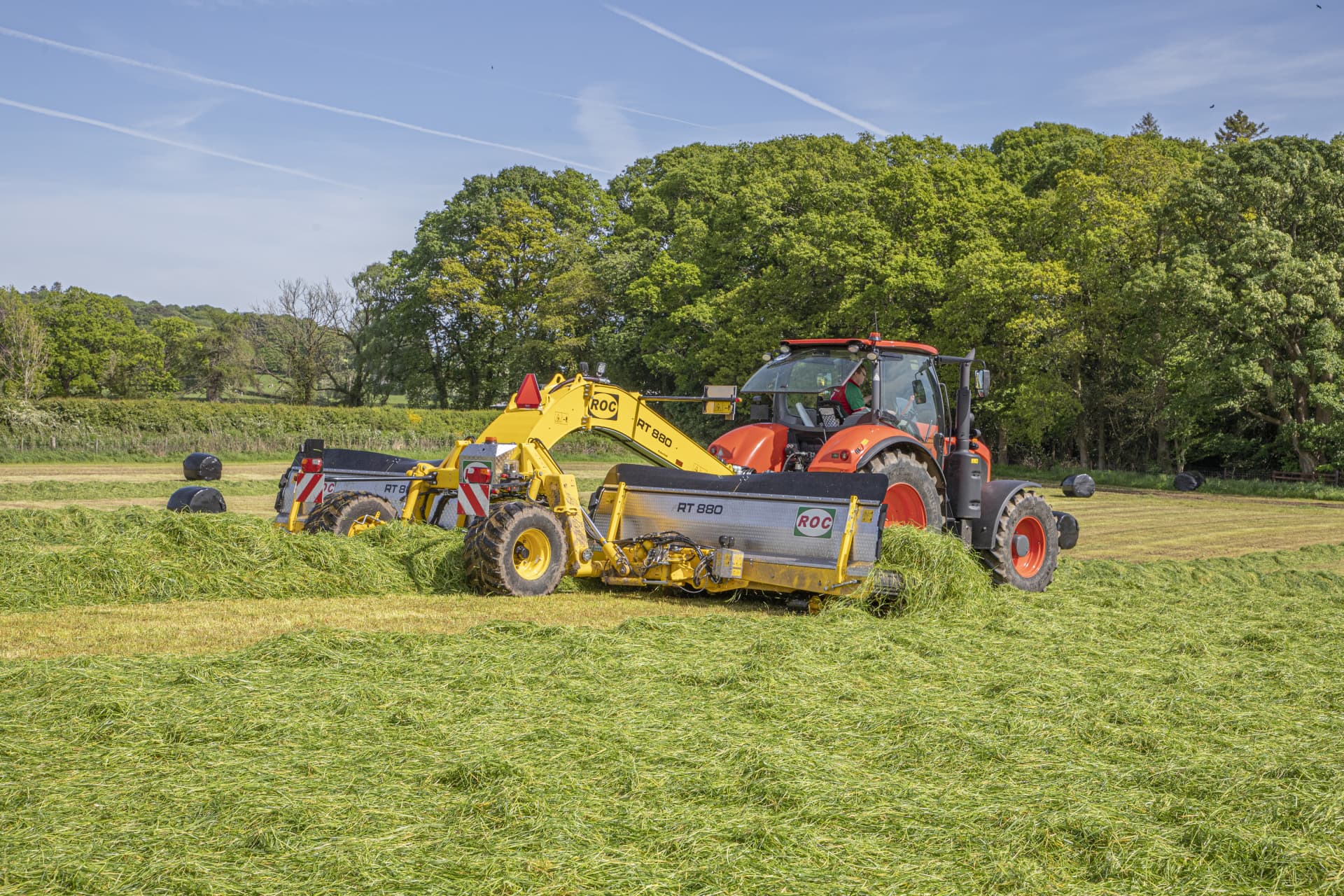Based at Burton Pidsea, East Riding of Yorkshire, the family-run farming, grass drying and grain storage operation aims to take five cuts each season, from 1,000 acres of lucerne and 800 acres of grass at Manor Farm. Its goal is to produce 10,000 tonnes of dried pellets for distribution to feed wholesalers around the UK from a harvesting process that starts at the end of March and runs through to November.
“Our focus is 100% on quality,” explains Sam Smales, pictured, who runs the business with his dad Andrew. “Our finished product has to be visually appealing and that means maintaining leaf colour, as well as offering a high level of nutrition for livestock and equestrian markets.”
Completely self-sufficient with kit, the business has recently invested in a ROC merger, to improve the way it handles forage.
“We had been using a 9m twin rotor rake, and while it was a good place to start, it soon proved to us that there was room for improvement with how we handled our crops,” explains Sam. “No matter how we tried, we couldn’t get away from the fact that rakes drag crop sideways across the surface as it sweeps material into a row. It’s quite aggressive.”
“To produce a higher quality product, we needed to reduce leaf losses – more so in lucerne – and also eliminate the risk of soil contamination. And the only way forward was to use a belt merger.”
The merger uses a pickup to ease the crop off the ground before moving it sideways on rubber conveyor belts to either reposition the crop or merge it into a larger row. Belt speeds can be varied, and run in the same or opposite directions, creating operation flexibility when it comes to grouping swaths together.
To make the most of forage harvester performance, Sam says the merger will be used to pick up and move crop over four passes, collecting more and more material each time to present a large swath for the New Holland FR500 forager.
“We’ll pick it up and move the crop every couple of hours using the merger, to help it towards a 50-55% dry matter content,” he says. “Then on the last pass, we’ll collect multiple swaths into one.”
Sam adds that the controllability of the ROC is impressive, enabling the machine to be fine-tuned to work smoothly at speeds of around 15-18kph.
“Wheels under the conveyor belts help with contour following; pickup and belt speeds are infinitely variable; and working height is easily adjusted,” he says. “There’s so much detail on the machine, that it’s obvious this has been properly engineered to last. It even has an auto-lube system to every bearing with the exception of pto shafts and brake drum adjusters.”
He says that compared to the rake, swath presentation is much better and he reports far less leaf and stalk damage.
“It’s also better for the forager, and we’ve noticed that the swaths are coming in that bit drier too, which has gained us 20% more throughput at the drying plant,” he says.




